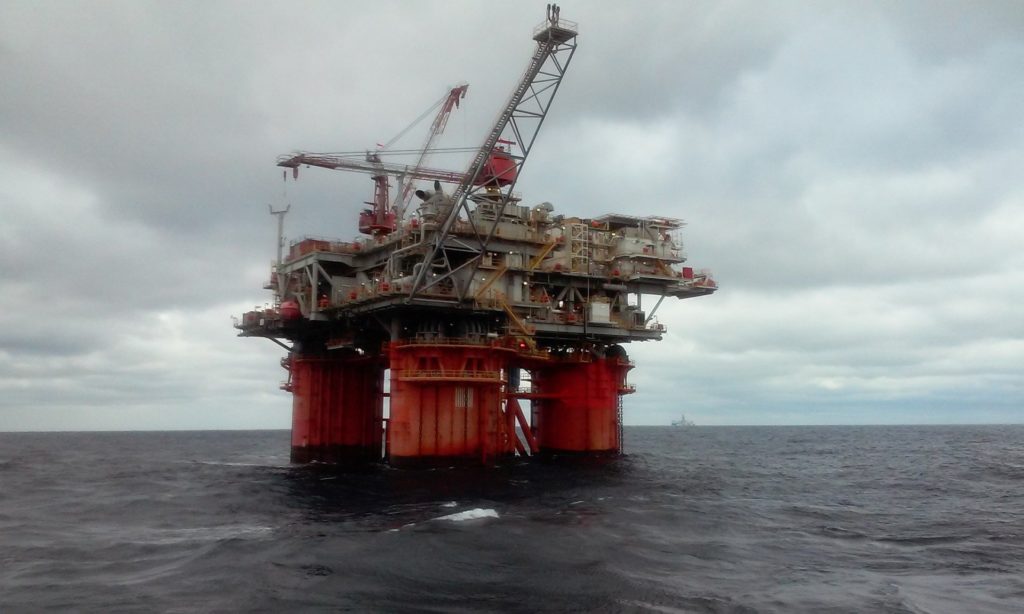
Australian companies plan to spend AU$5.1 billion (US$3.7 billion) on offshore gas exploration over the next six years, which is enough to develop 2.5GW of renewables capacity and generate close to 5,000 jobs, according to a report by the Institute for Energy Economics and Financial Analysis (IEEFA).
Released today (20 September), the report showed how “the Australian government has given the green light to oil and gas giants” to spend vast sums of money on “risky offshore exploration activities despite industry-low success rates and the global energy transition”.
Unlock unlimited access for 12 whole months of distinctive global analysis
Photovoltaics International is now included.
- Regular insight and analysis of the industry’s biggest developments
- In-depth interviews with the industry’s leading figures
- Unlimited digital access to the PV Tech Power journal catalogue
- Unlimited digital access to the Photovoltaics International journal catalogue
- Access to more than 1,000 technical papers
- Discounts on Solar Media’s portfolio of events, in-person and virtual
Although offshore exploration projects have a commercial success rate of between 20-40%, oil and gas companies intend to spend AU$5.1 billion on exploration, meaning around AU$3.5 billion (US$2.53 billion) will be wasted.
On the other hand, this amount of spending is equivalent to the current capital investment in around 2.5GW of renewable projects currently under construction or due to start soon in Queensland and Western Australia. These projects also have the additional benefit of producing 4,800 direct green jobs, according to the Clean Energy Council.
Co-author of the report, Milad Mousavian, said the Australian government was ignoring warnings by the International Energy Agency (IEA) that no new oil and gas projects should go-ahead in order to reach net zero by 2050.
“The government has opened up huge exploration areas to expand Australia’s offshore industry and in the next 10 or so years, will be expecting an explosion in development drilling like the one that started before the liquefied natural gas (LNG) boom began,” said Mousavian.
Australia unwisely banking on natural gas
Australia surpassed Qatar as the largest LNG exporter in the world in 2019, exporting 77.5 million tonnes with around 70% supplied by offshore gas. “The Federal government has actively backed the offshore oil and gas industry since the start of the LNG boom in late 2000s, with 13 exploration titles granted in 2019 alone – the highest number issued in the last decade,” said the report.
Driving this expansion is that Australia’s identified offshore gas reserves are three times more than its current onshore resources and, according to Geoscience Australia, the country could continue to produce conventional gas for the next 42 years.
Even so, “another wave of offshore development is unlikely to occur” as oil and gas companies have drilled half the number of exploration wells than development wells over the last decade, despite the government’s issuance of exploration permits being on the rise.
“Companies’ reluctance to drill exploration wells relative to previous decades shows the industry itself is losing confidence in future large-scale commercialisation of exploration projects and is focussing more on definite lower-risk cash generative production assets currently at hand,” said the report’s co-author Bruce Robertson.
The report outlines five major risk factors facing Australia’s offshore gas industry and in turn those who finance them. They are as follows:
- Australia’s biggest LNG customer, Japan, is aiming to halve the LNG share in its electricity mix by 2030. Aiming for a near 50% reduction in LNG in its 2030 power generation mix, Japan will no longer be as LNG-thirsty as it used to be. This is a real threat for Australian LNG exports.
- Advanced satellite-based emissions tracking systems have recently detected enormous methane leakages in remote offshore areas. This poses a serious threat to the social license of oil and gas companies and increases the risk facing bankers and investors in financing such projects.
- Another risk previously ignored is the changing profile of partners in joint ventures. Big oil and gas companies have lost their ability to sell down interest in billion-dollar projects due to partners being unwilling to commit.
- Offshore well depths have been rapidly increasing, exponentially inflating the capex of projects. Based on data from 700 offshore wells, IEEFA notes that the average total depth of wells has increased by around 600 meters (20%) during the LNG boom (2009-2019).
- LNG contracts have become shorter and more flexible due to the uncertain future of the LNG market. The current wave of country policy initiatives abandoning gas has led to customers migrating from rigid long-term (20-30 year) contracts to shorter ones (typically 10-15 years).
Taken together, these risks and Australia’s own climate risks should be ringing warning bells for the oil and gas industry and those in government who support it. “Like the demise of coal, it’s time for the government and industry to recognise the time to transition out of gas is now,” said Robertson.
As well as increasing support for oil and gas exploration, Australia’s federal government of prime minister Scott Morrison has been seen to drag its heels on climate commitments and has not set a net zero target of the type already committed by the US, the UK, China, Japan, South Korea and others. However, the appetite for renewable energy by various state governments across the country and acceptance by the general public appears to be high.
The government-funded Australian Renewable Energy Agency (ARENA) is however supporting projects that further lower the cost of renewable generation as part of a new investment strategy aimed at underpinning the transition to net zero emissions.
This follows the news that renewables could meet all electricity demand in Australia at certain times of the day by 2025.







